Chapter 3 Primary Lecture Series
In a nutshell, the primary lecture series is about the relationship between war and technology, minus the weapons. The purpose of this lecture series is to provide on overview of theories about the nature of technology, as well as processes of technological change, innovation, diffusion, transformation, and so on.
Each week we’ll be covering a new theory or process, as well as discussing a new technology, and looking at if and how the development of that technology influenced war and warfare, however indirectly. Some of the technologies are weird and some of them push at the boundaries of what might be considered a technology16 Slavery, for instance, is usually approached as a political/social/moral question, which we will consider, but we’ll be more focused upon the networks of physical and intangible technologies that sustained slavery in the Americas but I think there’s a good case for all the technologies listed below to be considered as important as many military technologies in shaping the character of warfare.
3.1 Course Introduction: What’s the Difference Between a Coffee Mug and an F-35?
 Figure 3.1: 400,000 dollars buys one F-35 helmet, or 2 months of coffee for our PhD students.
Figure 3.1: 400,000 dollars buys one F-35 helmet, or 2 months of coffee for our PhD students.
This lecture will cover the basics of the course, and there will be an opportunity to discuss administrative issues and so on. The focus of this lecture is to sketch a map of different theories of technology, and related theories about technological change and diffusion. The lecture will cover key terms, concepts, and theories.
A key feature of the lecture is a discussion of the difference between the study of science, technology, and society in general, and the discussions of technology found in military history, strategic studies, and security studies.
- Discussion Question:
- What makes a technology a military technology?
- Reading:
- Tiles, Mary, and Hans Oberdiek. Living in a Technological Culture: Human Tools and Human Values. Routledge, (2005), Chapter 1.
- Law, John. “STS as Method.” In The Handbook of Science and Technology Studies, edited by Ulrike Felt, Rayvon Fouché, Clark A. Miller, and Laurel Smith-Doerr, Fourth Ed., 31–58. MIT Press, (2017).
- Pinch, Trevor J., and Wiebe E. Bijker. “The Social Construction of Facts and Artefacts: Or How the Sociology of Science and the Sociology of Technology Might Benefit Each Other.” Social Studies of Science 14, no. 3 (1984): 399–441.
3.2 Agriculture
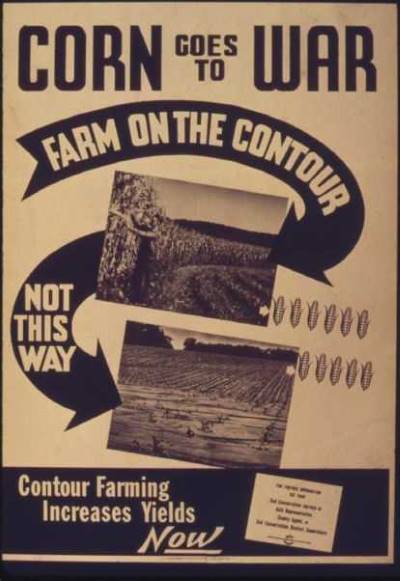 Figure 3.2: Information poster, USA, World War II.
Figure 3.2: Information poster, USA, World War II.
Okay, time to think big. I think there’s a good argument that you could split the history of warfare into pre-agrarian and post-agrarian history. Why? Because it’s extremely rare for large complex polities to arise without the population density that agriculture enables.
At the same time, according to some lines of thinking, it really sucked to be an early agriculturalist. By many measures, life was harder for those sticking in one place to harvest crops than for those following pre-agricultural patterns of life. So why did agriculture spread, and go on to sustain over 7.5 billion human beings? We’ll look at this with a couple of theories, notably technological determinism, and theories relating to the diffusion of technological innovations.
- Discussion Question:
- Are any technologies apolitical?
- Reading:
- Hughes, Thomas P. “The Evolution of Large Technological Systems.” In The Social Construction of Technological Systems: New Directions in the Sociology and History of Technology, edited by Wiebe E. Bijker, Thomas P. Hughes, and Trevor J. Pinch, Anniversary Edition. MIT press, (2012) :45–76.
- Basalla, George. The Evolution of Technology. Cambridge University Press, (1988). Chapters 1 & 2
- Rogers, Everett M. Diffusion of Innovations. Fifth Edition. Free Press, (2013). Chapter 1
3.3 Marine Chronometers
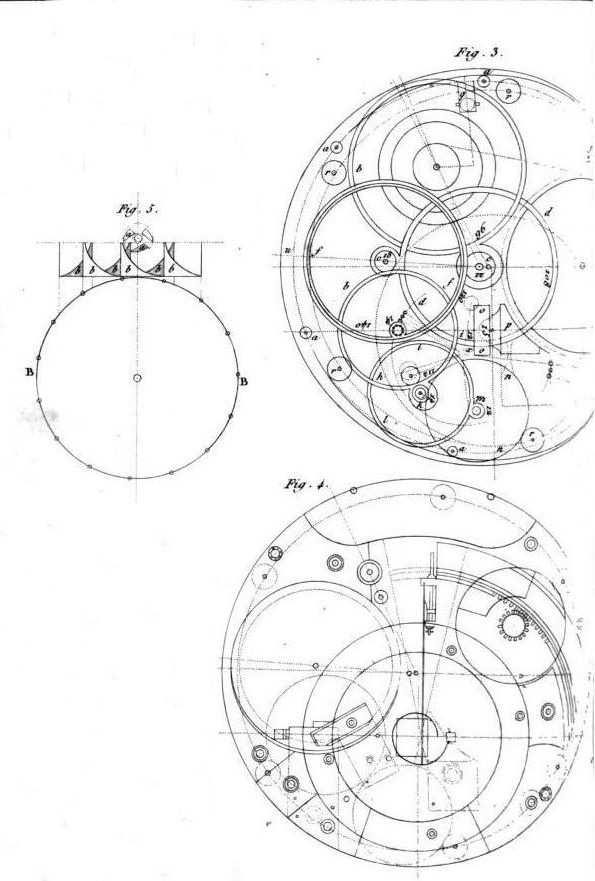 Figure 3.3: Drawings of Harrison’s H4 chronometer of 1761.
Figure 3.3: Drawings of Harrison’s H4 chronometer of 1761.
Many cultures throughout history have taken to the open waters, often using astral navigation to travel long distances in a predictable fashion. Yet it wasn’t until 1761 that John Harrison overcame created the first workable stable marine chronometer that enabled the precise determination of a ship’s longitude. Why is that?
This week we’ll be looking at how people think about, and theorise, the origins of technological innovations, as well as the structures that enable innovation. Are inventors genius figures who bring new technologies into being through intellect and imagination? Or are they simply our way of personalising somewhat random processes of tinkering and change? Moreover, we will be discussing the origins and construction of problems that technologies sometimes solve.
- Discussion Question:
- Do inventors deserve all the credit for their inventions?
- Reading:
- Mumford, Lewis. Technics and Civilization. University of Chicago Press, (2010). Chapter 1
- Sismondo, Sergio. An Introduction to Science and Technology Studies. Second edition. Wiley-Blackwell, (2010). Introduction and Chapter 8
- Rogers, Everett M. Diffusion of Innovations. Fifth edition. Free Press, (2013). Chapters 2 & 3
3.4 The Cotton Gin
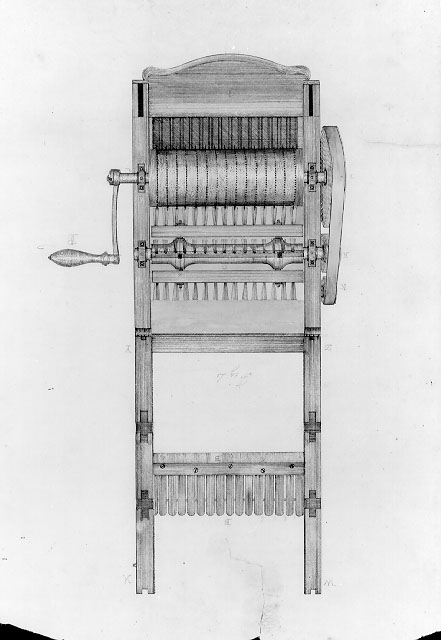 Figure 3.4: Drawing of Eli Whitney’s cotton gin, circa 1795.
Figure 3.4: Drawing of Eli Whitney’s cotton gin, circa 1795.
Capitalist slavery, particularly systems of property rights that enabled ownership of human beings, incorporates many different intangible technologies alongside tangible artifacts. This week we will be studying the “Triangular Trade” which involved the enslavement of human beings in West Africa, their purchase and transportation to plantations across the Atlantic, to produce consumer products such as sugar, that were then sold in Europe for profit.
The focus of this week’s lecture is not just upon the forms of warfare and violence conducted to sustain and protect this trade, but also upon what it means to frame and analyse social and political structures in technological terms. As we look for technologies, and seek to analyse the impact, influence, or spread of technology, what do we leave out? Here, the obvious question is how to consider the relationship between ideas of race and racism, and the core set of questions that this course is focused upon.
- Discussion Question:
- Is it possible to study the intangible aspects of technology in the same way we study artifacts?
- Reading:
- Winner, Langdon. “Do Artifacts Have Politics?” Daedalus 109, no. 1 (1980): 121–36. http://www.jstor.org/stable/20024652.
- Wyatt, Sally. “Technological Determinism Is Dead; Long Live Technological Determinism.” In The Handbook of Science and Technology Studies, edited by Edward J. Hackett, Olga Amsterdamska, Michael E. Lynch, and Judy Wajcman, Third ed., 165–80. MIT press, (2008).
- Rogers, Everett M. Diffusion of Innovations. Fifth edition. Free Press, (2013). Chapter 4
- Cowan, Ruth Schwartz. “The Consumption Junction: A Proposal for Research Strategies in the Sociology of Technology.” In The Social Construction of Technological Systems: New Directions in the Sociology and History of Technology, edited by Wiebe E. Bijker, Thomas P. Hughes, and Trevor J. Pinch, Anniversary ed. MIT press, (2012).
3.5 Electro-mechanical telegraphy
This week’s lecture will primarily focus upon the invention of electro-mechanical telegraphy and the development of submarine communications cables. As such, we will be continuing discussions from last week upon the relationship between capital, technology, and innovation. However the primary focus of this week will be the role of information technologies in the distribution of authority within polities.
Figure 3.5: Map showing the telegraph lines in operation, under contract, and contemplated, to complete the circuit of the globe.

As a wider point, we’ll be looking at the role of infrastructures, both national and international, in politics and war. The history of communications infrastructure in the 19th century cannot be readily separated from transport infrastructure. In the contemporary world, there are many different types of national infrastructure (notably sanitation and power) that are necessary to sustain human societies.17 One should not, however, assume that government-supplied infrastructure is present in every society, nor that such infrastructure is uniform in its supply of public goods. Just ask anyone trying to watch Netflix in the rural fringes of the UK’s telecommunications networks. As such, we’ll be looking at the emergence of new types of strategic targeting alongside stable infrastructures, and how these cause, and have caused, significant strategic and moral problems for differentiating between civilian and military targets.18 Of course, this assumes that one cares about such distinctions, which is not true of all conflicts, e.g. the current Syrian civil war.
- Discussion Question:
- Are the economic consequences of technology more important in strategic terms than their military utility?
- Reading:
3.6 Nitroglycerin
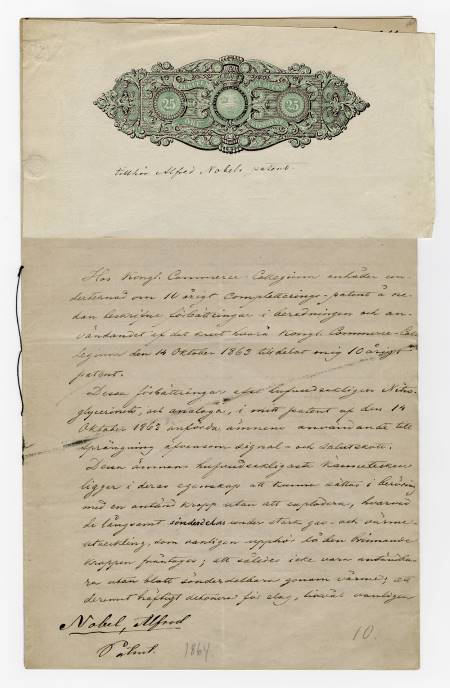 Figure 3.6: Alfred Nobel’s application for patent, regarding his percussion cap and principles for initial ignition of nitroglycerine, 1864.
Figure 3.6: Alfred Nobel’s application for patent, regarding his percussion cap and principles for initial ignition of nitroglycerine, 1864.
The seminar series goes into considerable detail about things that go “boom” in order to kill people. In this lecture, we’ll focus upon the development of industrial explosives in the 19th Century. In particular, we’ll be looking at the impact that dynamite, and subsequent industrial explosives, had on increasing access to natural resources. In this context, industrial explosives also provide a good way to address the processes that made up the industrial revolution itself. We will primarily be discussing Jan De Vries’ concept of the “industrious revolution” as a means of analysing when the industrial revolution really occurred.19 This of course implies that something like a “revolution” did occur, which you’re welcome to question.
Of course, you can’t really discuss the onset of high explosives without also considering their impact on warfare. This lecture introduces the idea of the “periodisation problem” that we’ll cover in more depth in term 2. In a nutshell, if you are to periodise warfare by a technology, or cluster of technologies, where do you draw the line? What does that start point do to your framing of a period of history? Typically, black powder/gunpowder is the key frame of periodisation by chemical energy. This framing foregrounds the lethality of weapon systems utilising explosives. An alternate, that I’ll talk about here, is beginning with high explosives. Why? Not just because they kill more people, but because it’s the effective start point for weapon systems that kill people long after wars have ended. As such, we’ll end the lecture looking at the long-term problems of unexploded ordnance, landmines, and improvised explosive devices.
- Discussion Question:
- How does technology shape the division of the history of war and warfare?
- Reading:
- Bayly, C. A. The Birth of the Modern World, 1780-1914: Global Connections and Comparisons. Wiley-Blackwell, (2004). Chapter 2
- Vries, Jan De. “The Industrial Revolution and the Industrious Revolution.” The Journal of Economic History 54, no. 2 (1994): 249–70. http://www.jstor.org/stable/2123912.
3.7 Barbed wire
 Figure 3.7: The Berlin Wall, 1961.
Figure 3.7: The Berlin Wall, 1961.
In this lecture we’ll look at the development of barbed wire. It is an extraordinarily ubiquitous technology, and one that exists in the present in much the same form as it existed in the past.20 Although much of what is now called barbed wire is technically razorwire. We will be discussing the political contexts of barbed wire deployment, notably in the dissection of tracts of the American west into fenced-off parcels of land. As such, we’ll also discuss the impact that technological possibilities can have. Barbed wire makes it easy for human beings to create cattle pens, but it also makes corraling human beings into concentration camps a damn sight easier. The implications of this should be obvious to anyone with a passing knowledge of 20th Century history.
At the same time, barbed wire also serves as a good means of discussing the legal and political context of technological innovations. At face value, maybe we might say that barbed wire has an inherent power to control the movements of livestock and humans. However much of its practical use is to enable the enforcement of legal, political, or social authority in an efficient manner. What, then, is the relationship between power and its technological means? Moreover, when considering such questions, we often foreground specific usages of a technology, while ignoring others. Should we, for example, focus upon barbed wire’s role as a technology of control, and ignore the development of rural communications networks that functioned on networks of barbed wire fences?
- Discussion Question:
- Why do some people read inherent power relationships into different technologies?
- Reading:
3.8 Nomograms
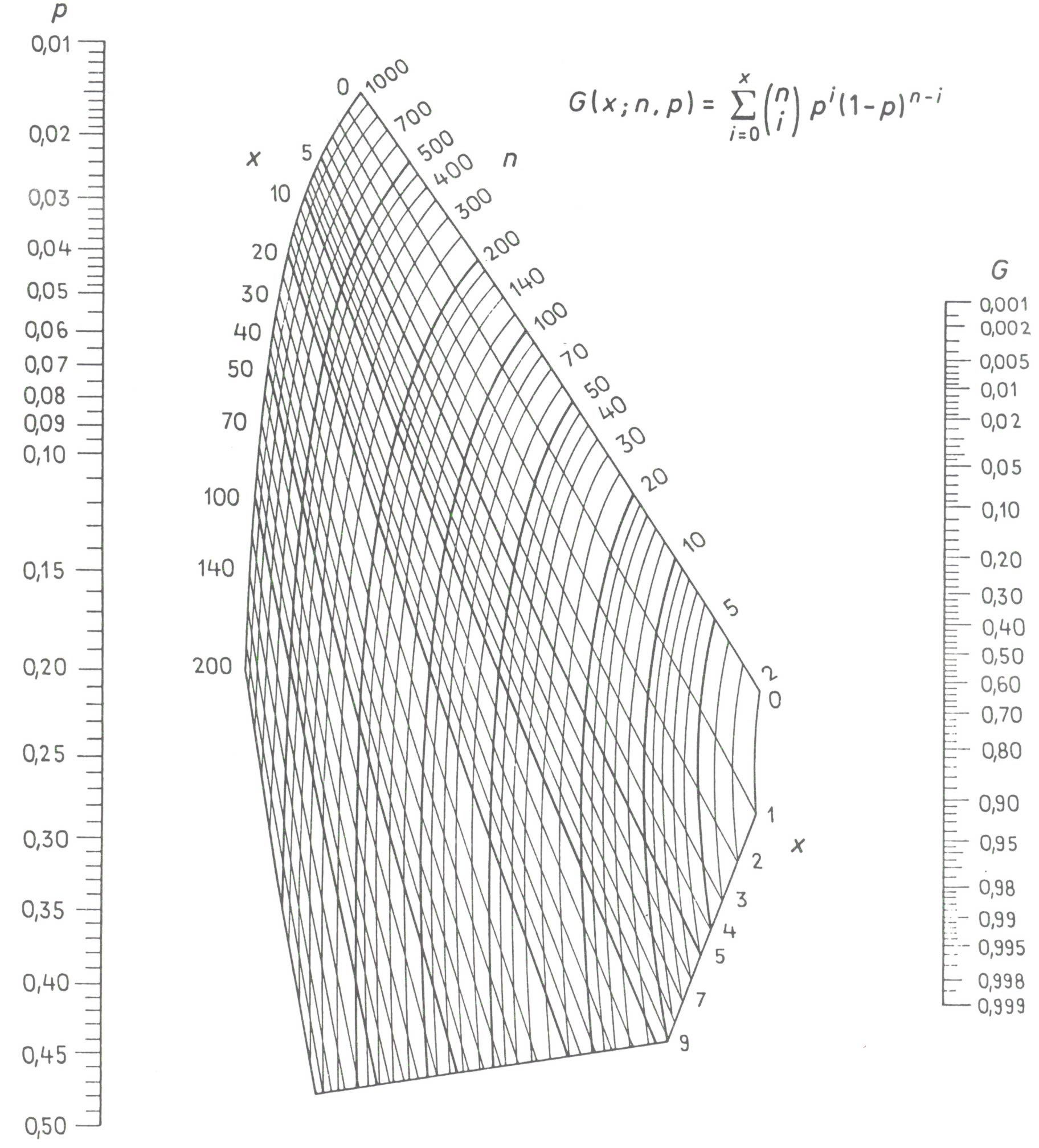 Figure 3.8: By drawing a straight line between the axes, you can solve some pretty tough equations.
Figure 3.8: By drawing a straight line between the axes, you can solve some pretty tough equations.
In this lecture we’ll be discussing what is pretty much a dead technology. Why? Well, one thing is that our histories of technology are usually biased towards inventions that we currently use, or successful technologies. We pay more attention to the processes of innovation than to processes of obsolescence. Nomographs are functionally obsolete. Once perhaps the only way to enable lots of people to do hard computation in a given domain, they have pretty much gone the way of the dodo. How did that happen? As we’ll cover in class, the obsolescence of nomographs and nomography is not a straghtforward matter. Understanding the problems of replacing nomographs is also a good way to understand the limits of early digital computers.
A second reason to examine nomographs is that they are artifactual remnants of early computation. Nomographs, like many early forms of tabulated mathematical output, enabled individuals to perform calculations without needing to understand the underlying processes or theory. This becomes particularly important in a military context, like, when you need to figure out how to hit a moving target at long range with an artillery shell or rocket. As such, nomographs provide a good way to consider the ways in which technology can extend the human self. After all, if you are entirely reliant upon a technology for your day-to-day life, at what point is it better to talk of cyborgs rather than humans?
- Discussion Question:
- What use is it to study dead, defunct, and failed technologies?
- Reading:
- Haraway, Donna. “A Manifesto for Cyborgs: Science, Technology, and Socialist Feminism in the 1980s.” Australian Feminist Studies 2, no. 4 (1987): 1–42. https://doi.org/10.1080/08164649.1987.9961538. Full text can be found online here
- Rosenthal, Caitlin. “Numbers for the Innumerate: Everyday Arithmetic and Atlantic Capitalism.” Technology and Culture 58, no. 2 (2017): 529–44.
- Light, Jennifer S. “When Computers Were Women.” Technology and Culture 40, no. 3 (1999): 455–83.
3.9 Reinforced concrete
 Figure 3.9: Four level highway interchange, Los Angeles.
Figure 3.9: Four level highway interchange, Los Angeles.
Imagine what your city would look like if the tallest building was your local cathedral or castle. Over the last 150-odd years, reinforced concrete has fundamentally reshaped the urban environment, enabling everything from sky scrapers to ICBM silos. It is partly the reason why human beings are now a primarily urban species. This lecture covers the development of reinforced concrete, and surveys a handful of its myriad applications.
The theoretical part of this lecture will focus upon the idea of technological imaginaries. One of the reasons for this is that reinforced concrete has enabled generations of architects and designers to essentially run riot with their imagination, unbound from prior material constraints. We can find similarities, therefore, between reinforced concrete, bakelite, plastics, and even digital technologies.
- Discussion Question:
- Is the technological imagination of today anything more than the technological constraints of tomorrow?
- Reading:
- Slaton, Amy E. Reinforced Concrete and the Modernization of American Building, 1900-1930. Johns Hopkins University Press, (2001). Chapter 5
- McNeil, Maureen, Michael Arribas-Ayllon, Joan Haran, Adrian Mackenzie, and Richard Tutton. “Conceptualizing Imaginaries of Science, Technology, and Society.” In The Handbook of Science and Technology Studies, edited by Ulrike Felt, Rayvon Fouché, Clark A. Miller, and Laurel Smith-Doerr, Fourth edition. MIT Press, (2017).
- Bijker, Wiebe E. “The Social Construction of Bakelite: Toward a Theory of Invention.” In The Social Construction of Technological Systems: New Directions in the Sociology and History of Technology, edited by Wiebe E. Bijker, Thomas P. Hughes, and Trevor J. Pinch, Anniversary edition. MIT press, (2012).
3.10 Penicillin
If you put too many human beings together in one spot, then it is almost inevitable that they will begin to suffer and die from communicable diseases. Viewed from this perspective, much of the history of war consists of organising an unsustainable number of human beings, and hoping to defeat the other unsustainable mass of human beings before things like dysentery kill too many of one’s own for them to be effective.
This week we’ll be looking at the development of penicillin, but with a particular emphasis on the role that markets play in the maturation of technologies and innovations. We’ll also examine the role that militaries play in the creation and subsidisation of markets. As such, it’s a good way to discuss the impacts that war can have on the developments of technology itself.
 Figure 3.10: Glass phial of British Standard penicillin.
Figure 3.10: Glass phial of British Standard penicillin.
- Discussion Question:
- How do technologies move from the military sphere to general use?
- Reading:
- Bud, Robert. “From Germophobia to the Carefree Life and Back Again: The Lifecycle of the Antibiotic Brand.” In Medicating Modern America: Prescription Drugs in History, edited by Andrea Tone and Elizabeth Siegel Watkins. NYU Press, (2007). Available online here
- Tyabji, Nasir. “Gaining Technical Know-How in an Unequal World: Penicillin Manufacture in Nehru's India.” Technology and Culture 45, no. 2 (2004): 331–49. http://www.jstor.org/stable/40060744.
3.11 Intermodal freight transport and the TEU
This is about as close as we get to the modern day in terms of innovations/technologies in the lecture series. The final lecture is going to cover the origins of intermodal freight transport, and the development of twenty foot equivalent units. This leads us to what is, I think, one of the really interesting features of contemporary warfare and technology, which is the degree of technical standardisation and uniformity across the globe governed by a wide variety of standards organisations, economic imperatives, and political bargaining. In essence, we’ll be discussing the idea of “technology as specification”.
For the theoretical side of this, we’ll be returning to the theme of infrastructure, but this time with an emphasis on path dependence. We’ll also look at long term consequences of innovations. For example, the advent of intermodal transport put a whole load of dockworkers out of work, and the gradual automation of the industry has increased the decline in jobs provided for by the shipping industry. At the same time, cheap shipping has enabled vastly increased volumes of consumer goods production, globally distributed supply chains, and increased economic interdependence. The question for this week, therefore, is how (or if) one can assign value judgements to the consequences of innovation, and whether such judgements can ever be objective.
 Figure 3.11: The Suez canal, scene of a low point in the Anglo-American special relationship.
Figure 3.11: The Suez canal, scene of a low point in the Anglo-American special relationship.
- Discussion Question:
- How do international standards shape the world we live in?
- Reading:
- Schmidt, Suzanne, and Raymund Werle. “Coordinating Technology: Studies in the International Standardization of Communication Technologies.” MIT Press, (1998). Chapter 3
- Mesthene, Emmanuel G. “Some General Implications of the Research of the Harvard University Program on Technology and Society.” Technology and Culture 10, no. 4 (1969): 489–513. http://www.jstor.org/stable/3101569.
- Rogers, Everett M. Diffusion of Innovations. Fifth edition. Free Press, (2013). Chapter 11
References
Basalla, George. 1988. The Evolution of Technology. Cambridge University Press.
Bayly, C. A. 2004. The Birth of the Modern World, 1780-1914: Global Connections and Comparisons. Wiley-Blackwell.
Beauchamp, Ken. 2000. A History of Telegraphy: Its Technology and Applications. Institution of Electrical Engineers.
Bijker, Wiebe E. 2012. “The Social Construction of Bakelite: Toward a Theory of Invention.” In The Social Construction of Technological Systems: New Directions in the Sociology and History of Technology, edited by Wiebe E. Bijker, Thomas P. Hughes, and Trevor J. Pinch, Anniversary, 155–82. MIT press.
Bud, Robert. 2007. “From Germophobia to the Carefree Life and Back Again: The Lifecycle of the Antibiotic Brand.” In Medicating Modern America: Prescription Drugs in History, edited by Andrea Tone and Elizabeth Siegel Watkins, 17–41. NYU Press.
Cowan, Ruth Schwartz. 2012. “The Consumption Junction: A Proposal for Research Strategies in the Sociology of Technology.” In The Social Construction of Technological Systems: New Directions in the Sociology and History of Technology, edited by Wiebe E. Bijker, Thomas P. Hughes, and Trevor J. Pinch, Anniversary, 253–72. MIT press.
Forth, Aidan. 2017. Barbed-Wire Imperialism: Britain’s Empire of Camps, 1876-1903. University of California Press.
Haraway, Donna. 1987. “A Manifesto for Cyborgs: Science, Technology, and Socialist Feminism in the 1980s.” Australian Feminist Studies 2 (4). Routledge:1–42. https://doi.org/10.1080/08164649.1987.9961538.
Hughes, Thomas P. 2012. “The Evolution of Large Technological Systems.” In The Social Construction of Technological Systems: New Directions in the Sociology and History of Technology, edited by Wiebe E. Bijker, Thomas P. Hughes, and Trevor J. Pinch, Anniversary, 45–76. MIT press.
Law, John. 2017. “STS as Method.” In The Handbook of Science and Technology Studies, edited by Ulrike Felt, Rayvon Fouché, Clark A. Miller, and Laurel Smith-Doerr, Fourth, 31–58. MIT Press.
Light, Jennifer S. 1999. “When Computers Were Women.” Technology and Culture 40 (3). Johns Hopkins University Press:455–83.
McNeil, Maureen, Michael Arribas-Ayllon, Joan Haran, Adrian Mackenzie, and Richard Tutton. 2017. “Conceptualizing Imaginaries of Science, Technology, and Society.” In The Handbook of Science and Technology Studies, edited by Ulrike Felt, Rayvon Fouché, Clark A. Miller, and Laurel Smith-Doerr, Fourth, 435–64. MIT Press.
Mesthene, Emmanuel G. 1969. “Some General Implications of the Research of the Harvard University Program on Technology and Society.” Technology and Culture 10 (4). [The Johns Hopkins University Press, Society for the History of Technology]:489–513. http://www.jstor.org/stable/3101569.
Mumford, Lewis. 2010. Technics and Civilization. University of Chicago Press.
Müller, Simone. 2016. Wiring the World: The Social and Cultural Creation of Global Telegraph Networks. Columbia University Press.
Pinch, Trevor J., and Wiebe E. Bijker. 1984. “The Social Construction of Facts and Artefacts: Or How the Sociology of Science and the Sociology of Technology Might Benefit Each Other.” Social Studies of Science 14 (3). Sage Publications, Ltd.:399–441. http://www.jstor.org/stable/285355.
Rogers, Everett M. 2013. Diffusion of Innovations. Fifth. Free Press.
Rosenthal, Caitlin. 2017. “Numbers for the Innumerate: Everyday Arithmetic and Atlantic Capitalism.” Technology and Culture 58 (2). Johns Hopkins University Press:529–44.
Schmidt, Suzanne, and Raymund Werle. 1998. “Coordinating Technology: Studies in the International Standardization of Communication Technologies.” MIT Press.
Sismondo, Sergio. 2010. An Introduction to Science and Technology Studies. Second. Wiley-Blackwell.
Slaton, Amy E. 2001. Reinforced Concrete and the Modernization of American Building, 1900-1930. Johns Hopkins University Press.
Tiles, Mary, and Hans Oberdiek. 2005. Living in a Technological Culture: Human Tools and Human Values. Routledge.
Tyabji, Nasir. 2004. “Gaining Technical Know-How in an Unequal World: Penicillin Manufacture in Nehru’s India.” Technology and Culture 45 (2). [The Johns Hopkins University Press, Society for the History of Technology]:331–49. http://www.jstor.org/stable/40060744.
Vries, Jan De. 1994. “The Industrial Revolution and the Industrious Revolution.” The Journal of Economic History 54 (2). [Economic History Association, Cambridge University Press]:249–70. http://www.jstor.org/stable/2123912.
Winner, Langdon. 1980. “Do Artifacts Have Politics?” Daedalus 109 (1). The MIT Press:121–36. http://www.jstor.org/stable/20024652.
Wyatt, Sally. 2008. “Technological Determinism Is Dead; Long Live Technological Determinism.” In The Handbook of Science and Technology Studies, edited by Edward J. Hackett, Olga Amsterdamska, Michael E. Lynch, and Judy Wajcman, Third, 165–80. MIT press.